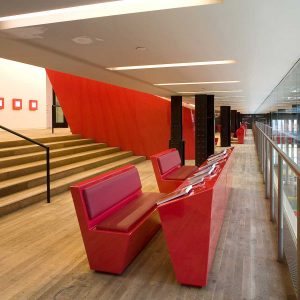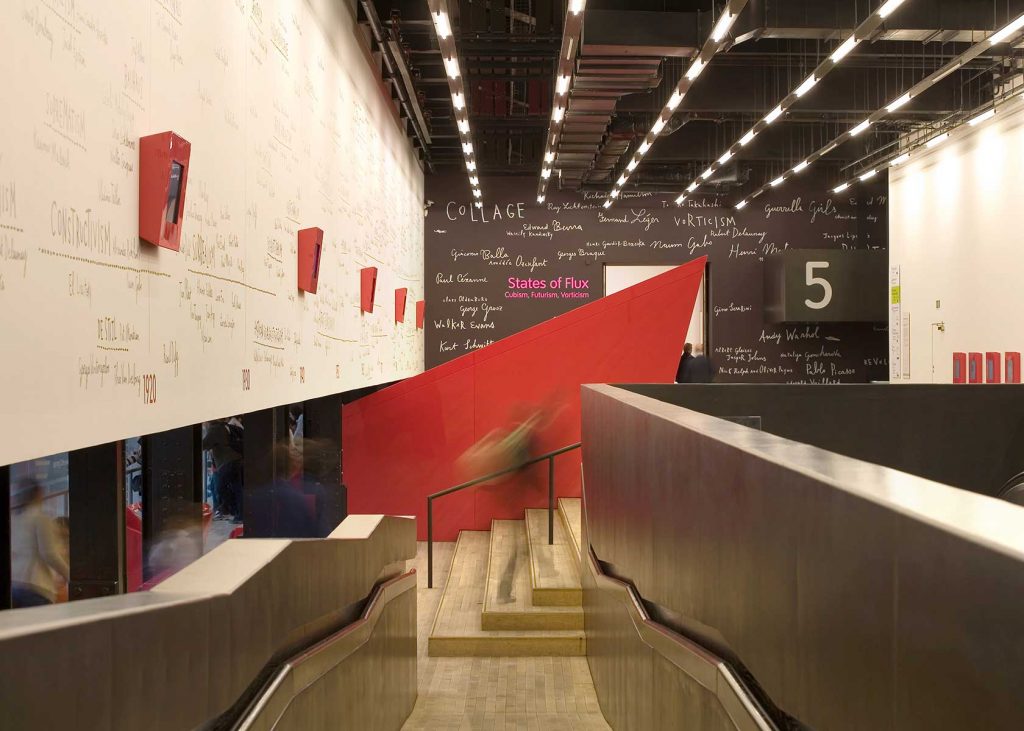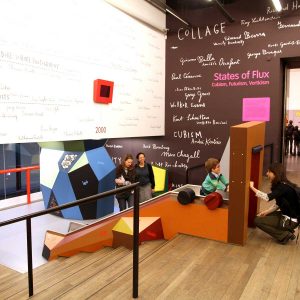Tate Modern Public Concourses, Level 3&5
Client: Tate Modern Museum
Location: Tate Modern, London
Year: 2006
Brief: To re-design the high-traffic public concourses on Levels 3&5 of the Museum as the ‘The Learning Zone’ – a contextual hub for the Tate Modern collection – in parallel with the first complete re-hanging of Tate Modern’s permanent collection.
The Learning Zone was conceived as a space where visitors can relax, play, watch and learn. It was designed to break down the conventional barriers between visitors and the museum collection, bringing them closer together. Aware that galleries can inspire a feeling that quiet reverence is necessary, we aspired to subvert this tendency, offering a designated space where people were invited to play games, ask questions and seek a deeper level of engagement with the subject matter and personalities that make up the world leading art collection.
To achieve this we created of a family of dynamic, interactive objects in the form of vivid red geometric sculptures containing different activities. Placed on the floor to remove any separation between content and audience, each one had its own distinct identity but existed harmoniously as part of a group, without jarring with the wider architecture of the Museum. Unlike sculptures elsewhere in the gallery, these were designed to be sat on and touched, acting as interactive benches, seating and interpretative devices.
To ensure the space would appeal to adults, teenagers and young children alike, we included informal furniture, large-scale graphics and multi-user screens which could be enjoyed passively, as well as interactives aimed at specific age groups. The games themselves encouraged healthy competition and ‘stealth learning’, helping the visitor to develop a personal connection with the art they have seen.
A timeline of art movements running the length of the concourse was the driver for the zone. We commissioned illustrator Sara Fanelli to create a hand-written piece that set out the material in a human and open manner – as a conversation rather than declaration – decade shifts were punctuated by screens that provided context and texture to the artists of the period in a pragmatic and effective way.
Across the floor a family of interactives used a range of digital media to open up complex individual artworks and artists’ methods to the visitor – from short films on individual screens with subtitles and tethered speakers, to longer features with directional audio in the main ‘cinema’ structure, to the central table which used collage image and textual graphics to present questions around the displayed artists and works.


































